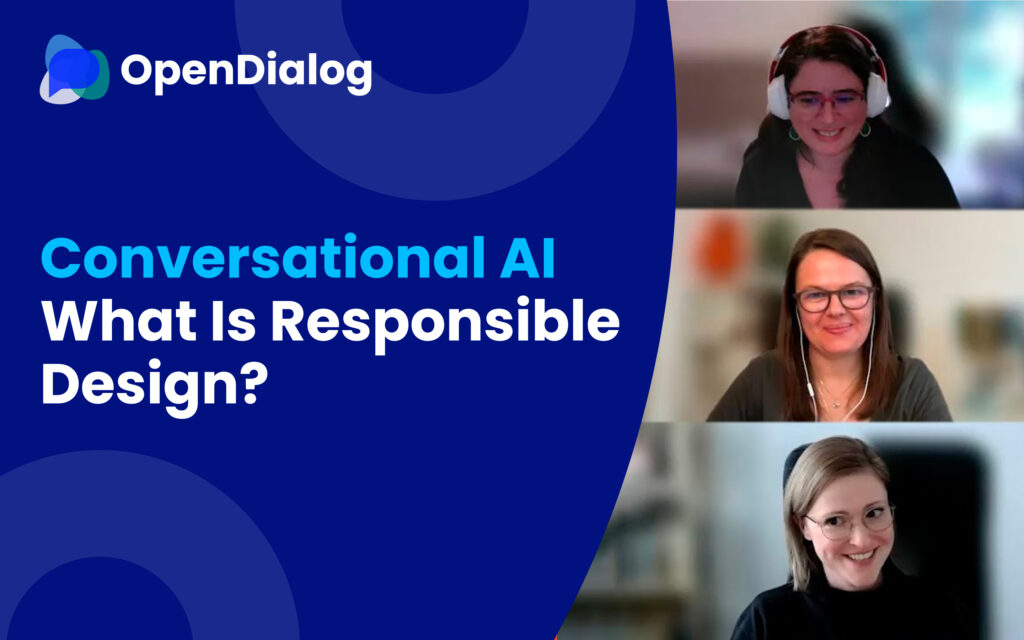With the advent of generative AI, and large language models like GPT-4, one could wonder how much governance conversation designers still have over the end-user experience…
To truly understand responsibility in Conversational AI, it is important that we first ask the question about ‘what really is responsible design’?
To Jennifer Heape responsible design is about making clear choices and considering the processes we put in place when designing, which requires introspection and addressing bias. Responsible design encompasses a wide range of issues, from gendering to data privacy. She believes that the starting principles of responsible design are linked to empathic design principles, which involve designing with compassion and considering the emotional state of the user. Trust is also important in responsible design, along with transparency and expectation setting. Social context and frustration are two other factors to consider in designing conversational interfaces.
Jennifer Heape also expresses her desire to conduct rigorous user testing on all designs before launch, but acknowledges that it may not always be possible. Designers often have to make assumptions, which is where analytics comes in to provide insights about the product while it’s in use. She finds the conversation around responsible AI usage and bias, especially in Generative AI and Large Language Models like Chat GPT, to be a relevant and important topic. She suggests that rather than only being a potential threat, Generative AI could be used to challenge biases and expand our thinking, citing the example of using it to list out all possible synonyms for a word or phrase, which could lead to unexpected insights.
Maaike Coppens additionally points out that the importance of responsible design is in achieving balanced social, environmental, and economic development. She suggests identifying ethical guiding principles for the team to uphold throughout the project and taking into account the real-world impact of what they are designing. Maaike also emphasizes the importance of explainability, clarity, inclusion, and awareness of bias in the design process. She highlights the need for informed empathy, which is informed by diverse and equitable data collection and data sets.
Maaike also adds that conversation designers, have a crucial role in making responsible and inclusive choices when it comes to voice, persona, and language in voice user interfaces.
Another important aspect of conversation design is the flexibility of the model. The conversation designer can choose how flexible the conversation design should be, and whether to account for cognitive behaviors such as attention span, rhythm acceleration, speech speed, and more. They can tailor the setup of the platform to allow for these cognitive behaviors and account for a wider range of user needs.
Word choice is also a critical component of conversation design. Conversation designers need to ensure that their choice of words does not trigger certain audiences. What may seem normal or harmless to the design team may be triggering to certain audiences, so designers need to check their designs for potentially harmful expressions or colloquialisms.
Finally, Romina Pankoke mentions that being transparent and informative to the user is a key consideration in conversation design. However, there is always the challenge of balancing the length of text with the amount of information provided. In other media, it is possible to include disclaimers and caveats, but in voice interfaces, it is necessary to be concise while still ensuring that the user is properly informed. There is no easy solution to this challenge, but it remains an interesting and ongoing consideration in conversation design.
As designers, it is essential to take ownership of the impact the Conversational AI projects can have on the life of end users. To do so, you need to be quite confrontational with yourself, as a designer and as a human being, Jennifer states.
Watch the full video:



